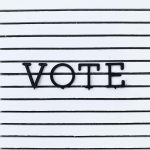In today’s evolving technological landscape, the integration of Internet of Things (IoT) devices has become an essential tool in managing, monitoring and reducing energy consumption in homes. This article explores how UK households can capitalize on the capabilities of IoT technologies to monitor their electrical usage accurately in real time. We will delve into the various applications of these devices, the power of data and cloud-based systems in managing energy, and the intersection of these technologies with smart homes.
Unlocking the Potential of IoT Devices in Energy Monitoring
As we navigate through the 21st century, we are witnesses to the powerful influence of technology in our everyday lives. In the forefront of these innovations is the Internet of Things (IoT), a system of interconnected digital devices that communicate and exchange information. IoT has been hailed as a game-changing technology, particularly in energy management, by providing timely and actionable insights into energy consumption patterns.
Lire également : How can UK residents optimize the placement of wind turbines on residential properties?
IoT devices equipped with sensors can provide real-time data on electricity usage. These sensors are able to detect and measure the electrical power consumed by household appliances, giving homeowners a detailed understanding of their consumption habits. Through these devices, every UK home can monitor, control, and reduce their energy consumption, leading to both financial and environmental benefits.
The Power of Data in Energy Management
Data plays a fundamental role in energy management systems. The power of data lies in its ability to transform raw numbers into meaningful insights. Through the use of IoT sensors, data on power consumption can be collected in real time, providing homeowners with a comprehensive overview of their energy usage.
A lire aussi : Which types of draught-excluding techniques are most effective in UK period homes?
By harnessing the power of data and analytics, households can identify patterns in their energy consumption. Patterns such as energy usage spikes during certain times of the day, or appliances that consume more power than others, can be identified and addressed. Consequently, this information can be used to make informed decisions, such as adjusting daily routines or replacing energy-inefficient appliances, to optimize energy use.
The Role of Cloud-Based Systems in Energy Monitoring
In the world of IoT technology, cloud-based systems have proven to be instrumental. They provide a platform where real-time data from IoT devices can be stored, processed, and accessed. These systems facilitate the seamless integration of IoT devices, allowing for data from various sensors to be consolidated and analyzed in one place.
Cloud-based systems enable homeowners to remotely monitor and control their energy consumption from anywhere at any time. Through smartphone applications or web-based platforms, homeowners can view their real-time energy consumption, receive alerts when usage spikes, and even control their appliances remotely. This level of control and accessibility significantly enhances the effectiveness of energy management systems in homes.
The Intersection of IoT and Smart Homes
Smart homes are the epitome of the integration of IoT and energy management. A smart home is a residence equipped with devices that automate tasks related to the management of basic home functions and features. These include lighting, heating, entertainment systems and, importantly, energy monitoring.
In a smart home, IoT devices are the backbone of energy monitoring. Sensors are installed in different appliances and areas around the home, transmitting real-time data to a central control system. This system then provides homeowners with instantaneous feedback on their energy consumption.
Additionally, smart homes go a step further by offering predictive analysis. IoT devices in these homes learn from historical energy use data to predict future consumption patterns. This predictive capability can provide homeowners with suggestions on how to optimize their energy usage, leading to further energy and cost savings.
The Future of Energy Management: Crossref and Scholar Applications
Crossref and Scholar applications are two revolutionary technologies that could potentially enhance the capabilities of IoT devices in energy management. Crossref is a digital hub that allows for the integration and interconnection of various devices and systems, while Scholar serves as an intelligent, learning system that can analyze and interpret data.
In the context of energy monitoring, Crossref can facilitate the integration of various IoT devices across the home, enhancing the comprehensiveness and accuracy of the data collected. On the other hand, Scholar applications can utilize machine learning algorithms to analyze this data and provide predictive insights, much like a digital scholar.
Despite being in their infancy, these technologies hold great promise in enhancing the capabilities of IoT devices in energy monitoring. Through their integration, UK homes could potentially achieve a new level of energy efficiency, leading to substantial cost and environmental benefits.
The Integration of Smart Meters and IoT Devices
Smart meters are an integral part of the IoT ecosystem, providing the perfect platform for monitoring energy consumption in real time. These meters are connected devices that record the amount of electricity used by a household. Unlike traditional meters, smart meters can send usage reports directly to the energy supplier, eliminating the need for manual meter readings.
As IoT enabled devices, smart meters have the capability to communicate with other smart devices in the home. This interconnectivity provides the ability to analyze the energy consumption of each individual appliance and system connected to the smart meter. For example, smart meters can identify when a refrigerator is using more energy than usual, signalling potential faults or inefficiencies.
The integration of smart meters and IoT devices not only allows homeowners to monitor their energy consumption in real time, but also facilitates proactive energy management. IoT devices can respond to data from smart meters and adjust their operation to optimize energy usage. For example, a smart thermostat may lower the temperature of the home during periods of low occupancy, conserving energy.
Leveraging Machine Learning for Smart Energy Management
Machine learning, a subset of artificial intelligence, has significant potential in the realm of smart energy management. By leveraging machine learning, IoT-based systems can analyze and interpret complex datasets, enabling them to predict future energy usage and provide personalized energy-saving recommendations.
In this context, smart grids, modernized electrical grids that use IoT and machine learning technologies to optimize the production and distribution of electricity, can significantly improve energy efficiency in homes. Smart grids are capable of understanding and learning from historical consumption patterns, allowing them to forecast future energy demands. This enables the grid to adjust energy distribution in real time, reducing waste and enhancing efficiency.
Moreover, machine learning algorithms can help identify energy-draining appliances, inefficient usage patterns and peak demand times. This level of insight enables homeowners to make more informed decisions about their energy usage, potentially leading to substantial cost and environmental savings.
Conclusion
In conclusion, the integration of IoT devices, smart meters, and machine learning technologies presents a powerful solution for managing and monitoring energy consumption in real time. The power of real-time data, coupled with the predictive capabilities of machine learning, offers homeowners unprecedented control over their energy usage.
The future of energy management lies in technologies such as Crossref and Scholar applications, which can enhance the capabilities of IoT devices through machine learning algorithms and interconnected systems. Despite being in their early stages, these technologies could revolutionize the way UK households monitor their energy usage, potentially leading to significant cost and environmental savings.
As UK homeowners become more eco-conscious, embracing technologies such as IoT devices, smart meters and machine learning will not only contribute to a sustainable lifestyle but also help monitor and manage energy consumption in real time. The future is undoubtedly smart, connected, and energy-efficient.











